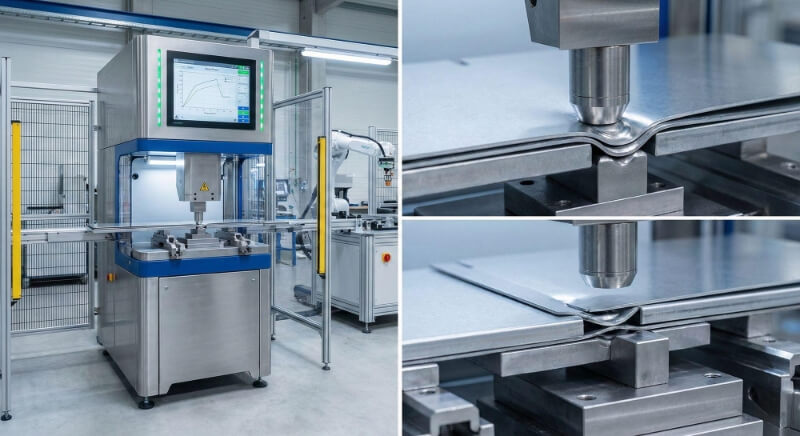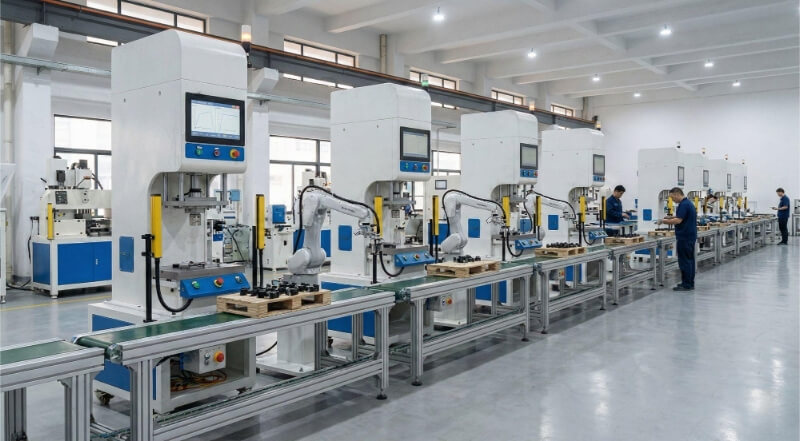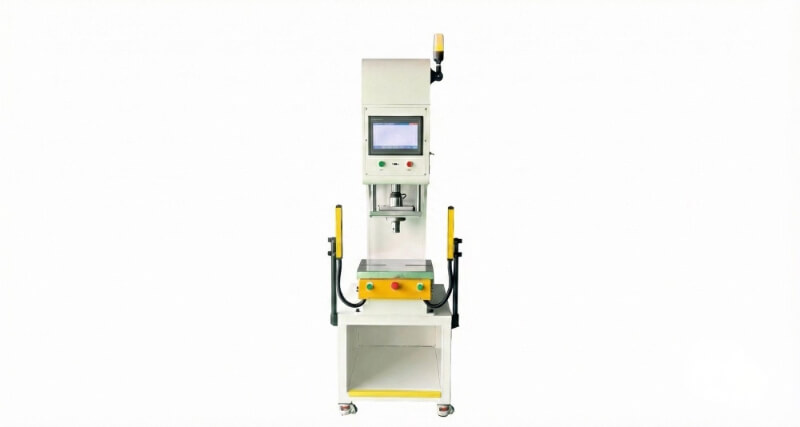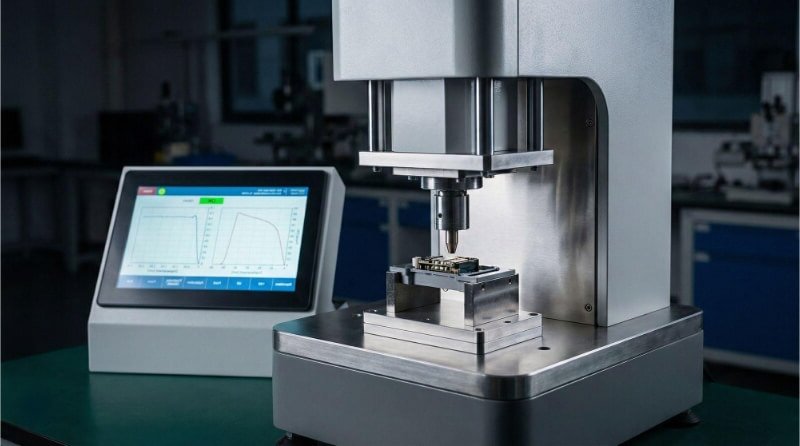Molte aziende hanno bisogno di metalli forti e affidabili per diversi lavori. A volte il normale acciaio al carbonio non è sufficiente. Potreste avere problemi di ruggine, carichi pesanti o condizioni di lavoro difficili. L'acciaio basso legato è una risposta a questi problemi. Questo materiale offre una maggiore forza, una migliore resistenza all'usura e prestazioni migliori per i progetti più impegnativi.
Questo tipo di acciaio colma il divario tra costo e prestazioni. Può sopportare maggiori sollecitazioni e calore, pur rimanendo conveniente. Vediamo cosa rende questo materiale unico e prezioso.

Che cos'è l'acciaio a bassa lega?
L'acciaio basso legato è un tipo di acciaio con piccole quantità di elementi aggiunti, di solito tra 1% e 8%. Questi elementi vengono aggiunti per migliorare la resistenza, la durezza, la resistenza alla ruggine e la tenacità dell'acciaio. Gli elementi aggiunti più comuni sono cromo, nichel, molibdeno e vanadio. Questi elementi rendono l'acciaio più resistente e durevole del normale acciaio al carbonio, ma senza i costi elevati dell'acciaio inossidabile.
Il tipo e la quantità di elementi aggiunti influiscono sulle prestazioni dell'acciaio. Alcuni acciai basso-legati sono migliori per saldatura. Altri sono in grado di sopportare temperature elevate o forti sollecitazioni senza cedere. I produttori scelgono la miscela giusta in base alle esigenze dell'acciaio.
Composizione degli acciai basso legati
Gli acciai bassamente legati sono prodotti aggiungendo piccole quantità di elementi specifici all'acciaio al carbonio. L'obiettivo è migliorare le prestazioni senza rendere il materiale troppo costoso o complicato da lavorare.
Ogni elemento aggiunto all'acciaio basso legato ha uno scopo ben preciso. Anche in piccole quantità, questi elementi possono migliorare significativamente il comportamento dell'acciaio:
- Cromo (0,5% - 1,5%): Aumenta la durezza e la resistenza all'usura.
- Nichel (0,5% - 3,5%): Migliora la tenacità e le prestazioni alle basse temperature.
- Molibdeno (0,1% - 0,6%): Aggiunge forza e resistenza al calore.
- Manganese (0,5% - 1,5%): Aumenta la resistenza e favorisce la tempra durante il trattamento termico.
- Vanadio (0,05% - 0,15%): Rafforza l'acciaio e ne migliora la struttura granulometrica.
- Silicio (0,1% - 0,5%): Aumenta la resistenza senza rendere l'acciaio troppo fragile.
- Rame (0,2% - 0,5%): Contribuisce a migliorare la resistenza alla ruggine in condizioni di umidità.
Questi elementi vengono accuratamente selezionati e aggiunti in piccole percentuali, di solito con un contenuto totale di lega inferiore a 8%. La miscela esatta dipende dalla destinazione dell'acciaio.
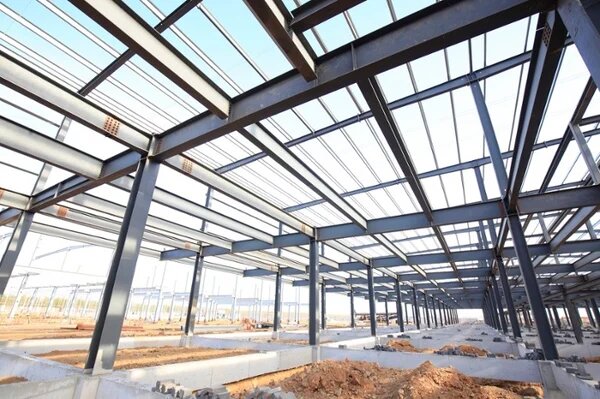
Proprietà meccaniche
Gli acciai basso legati sono progettati per affrontare ambienti difficili. Le loro proprietà meccaniche li rendono più resistenti, più impegnativi e più duraturi degli acciai al carbonio standard.
Forza e durezza
Gli acciai basso legati hanno in genere una resistenza alla trazione e allo snervamento superiore a quella degli acciai al carbonio semplici.
- Resistenza alla trazione: Di solito varia da 500 a 1.200 MPa, a seconda della lega e del trattamento termico.
- Resistenza allo snervamento: Spesso è compreso tra 350 e 1.000 MPa.
Ciò significa che questi acciai possono sopportare carichi più pesanti senza piegarsi o rompersi. Anche la durezza è migliorata. Ad esempio:
- Con l'aggiunta di molibdeno e vanadio, la durezza Rockwell può variare da 25 HRC a oltre 40 HRC, a seconda della qualità e del trattamento.
Duttilità e tenacità
Gli acciai basso legati offrono un buon equilibrio tra resistenza e formabilità.
- Allungamento a rottura: Di solito si colloca tra 12% e 25%, il che significa che l'acciaio può allungarsi prima di rompersi.
- Energia d'impatto Charpy V-Notch: Può variare da 20 J a oltre 100 J a temperatura ambiente e oltre 27 J a -20°C per gradi tenaci come ASTM A633.
Resistenza alla fatica e all'usura
Le sollecitazioni ripetute possono causare il cedimento dei componenti nel tempo. Gli acciai basso legati resistono meglio alla fatica rispetto agli acciai al carbonio semplici.
- Resistenza alla fatica: Per molti acciai debolmente legati, questo valore si aggira tra i 250 e i 600 MPa, a seconda della finitura superficiale, del tipo di carico e del tipo di acciaio. trattamento termico.
- Resistenza all'usura: Migliorata da elementi come il cromo e il molibdeno, che formano carburi più complessi nella matrice dell'acciaio.
Proprietà fisiche
Gli acciai basso legati non offrono solo resistenza meccanica. Le loro caratteristiche fisiche influiscono anche sulle prestazioni in ambienti diversi.
Densità e punto di fusione
Gli acciai basso legati hanno una densità vicina a quella dell'acciaio al carbonio semplice, circa 7,85 g/cm³. Questo li rende relativamente pesanti, il che è utile per le parti strutturali che necessitano di peso e stabilità.
Il loro punto di fusione è generalmente compreso tra 1425°C e 1540°C (da 2597°F a 2800°F), a seconda degli elementi di lega. Ad esempio:
- Acciaio 4140 (un acciaio standard a bassa lega) fonde intorno ai 1416°C - 1460°C.
- Un elevato contenuto di nichel o cromo può aumentare il punto di fusione.
Conducibilità elettrica e termica
Gli acciai bassamente legati sono scarsi conduttori di elettricità e calore rispetto ai metalli puri come il rame o l'alluminio:
- Conduttività elettrica: Circa 10% IACS (International Annealed Copper Standard), mentre il rame è 100%.
- Conduttività termica: In genere tra 25 e 50 W/m-K, mentre il rame supera i 380 W/m-K.
Per questo motivo, gli acciai basso legati non sono utilizzati per i cablaggi elettrici o i dissipatori di calore. Tuttavia, la loro bassa conduttività li rende più stabili in ambienti caldi. Elementi di lega come il silicio e il manganese riducono ulteriormente la conduttività, ma aumentano la stabilità strutturale.
Resistenza alla corrosione
Gli acciai basso-legati hanno prestazioni migliori contro la ruggine rispetto all'acciaio al carbonio semplice, ma non come l'acciaio inossidabile. La loro resistenza alla corrosione dipende dal tipo e dalla quantità di elementi di lega:
- Cromo (superiore a 0,5%) forma uno strato di ossido passivo che contribuisce a rallentare la corrosione.
- Rame (circa 0,2% - 0,5%) aggiunge resistenza in ambienti umidi o marini.
Ad esempio, gli acciai resistenti agli agenti atmosferici come l'ASTM A588 utilizzano rame, cromo e nichel per formare uno strato superficiale protettivo quando vengono esposti all'atmosfera. Tuttavia, la maggior parte degli acciai basso-legati ha ancora bisogno di rivestimenti, zincature o pittura per una protezione a lungo termine, soprattutto in ambienti esterni o con presenza di sostanze chimiche.
Classificazione degli acciai basso legati
Gli acciai basso legati sono organizzati in sistemi di classificazione formali che aiutano ingegneri, produttori e acquirenti a scegliere il materiale giusto. Questi sistemi definiscono la composizione, la resistenza, la saldabilità e la resistenza all'usura o alla corrosione dell'acciaio.
Norme ASTM e SAE
Per classificare gli acciai basso-legati vengono comunemente utilizzati due sistemi principali: ASTM e SAE.
ASTM (American Society for Testing and Materials) fornisce le specifiche per la produzione e il collaudo dell'acciaio. Questi standard sono ampiamente utilizzati nelle costruzioni, nelle opere strutturali, nelle condutture e nei recipienti a pressione.
Esempi:
- ASTM A572 - un acciaio strutturale a bassa lega e ad alta resistenza.
- ASTM A514 - un acciaio legato temprato e rinvenuto utilizzato nelle attrezzature pesanti.
SAE (Society of Automotive Engineers) utilizza un sistema numerico a quattro cifre. Viene spesso utilizzato nell'ingegneria meccanica e nella progettazione automobilistica.
Esempio:
- SAE 4140 - un acciaio al cromo-molibdeno noto per le sue caratteristiche di robustezza, tenacità e resistenza all'usura.
Comprendere i numeri e le denominazioni dei gradi
I numeri dei gradi dell'acciaio sono più che semplici etichette: offrono indizi su cosa contiene l'acciaio e su come si comporta.
Gradi SAE:
- Le prime due cifre indicano il gruppo di leghe principale.
- Le ultime due cifre indicano il contenuto approssimativo di carbonio in centesimi di percentuale.
Gradi ASTM:
- Utilizzare una combinazione di lettere e numeri per descrivere l'applicazione e il livello di resistenza.
Acciai a bassa lega ad alta resistenza (HSLA)
Gli acciai HSLA sono una sottocategoria degli acciai basso legati. Sono stati appositamente sviluppati per offrire un rapporto resistenza/peso più elevato, una migliore saldabilità e una maggiore resistenza alla corrosione rispetto al normale acciaio al carbonio.
Gradi HSLA comuni:
- ASTM A572 - utilizzati in ponti ed edifici.
- ASTM A588 - noto per la resistenza agli agenti atmosferici nelle strutture esterne.
- ASTM A709 - ampiamente utilizzato nella costruzione di ponti autostradali e ferroviari.

Vantaggi e limiti
Gli acciai basso legati offrono diversi vantaggi, ma comportano anche alcuni compromessi. Conoscere entrambi aiuta ingegneri e acquirenti a fare scelte più intelligenti nella selezione dei materiali.
Vantaggi degli acciai a bassa lega
Gli acciai basso legati offrono prestazioni migliori rispetto agli acciai al carbonio semplici sotto molti aspetti.
- Maggiore forza significa che è possibile utilizzare componenti più sottili e leggeri senza perdere in durata.
- Migliore resistenza aiuta i pezzi a resistere alla fessurazione, anche in caso di urti o di freddo.
- Migliore resistenza alla corrosione prolunga la vita dei componenti in ambienti difficili.
- Buona saldabilità li rende più facili da fabbricare in forme complesse.
- Conveniente rispetto alle leghe inossidabili o esotiche.
Potenziali svantaggi e compromessi progettuali
Gli acciai basso legati non sono perfetti per ogni impiego.
- Ha un costo maggiore rispetto all'acciaio al carbonio, grazie all'aggiunta di elementi.
- Limitata resistenza alla corrosione rispetto all'acciaio inossidabile.
- Trattamento termico più complesso può essere necessario per ottenere le proprietà desiderate.
- Rischio di cricche da saldatura se non adeguatamente controllata durante la fabbricazione.
- Ridotta duttilità in alcuni gradi, soprattutto dopo l'indurimento.
Applicazioni degli acciai debolmente legati
Gli acciai basso legati sono utilizzati in molti settori che richiedono resistenza, durata e controllo dei costi. Aiutano a costruire componenti in grado di resistere alle sollecitazioni, al calore e agli ambienti difficili senza subire guasti.
Costruzione e componenti strutturali
In edilizia, gli acciai basso legati sono utilizzati per travi, colonne e telai di supporto. Il loro elevato rapporto resistenza/peso consente di realizzare strutture più leggere senza rinunciare alla sicurezza. Gli acciai HSLA sono spesso scelti per ponti, edifici e torri. Inoltre, resistono meglio ai danni causati dagli agenti atmosferici rispetto all'acciaio al carbonio semplice.
Serbatoi a pressione e caldaie
Gli acciai basso legati sono ampiamente utilizzati in recipienti a pressione, serbatoi e caldaie. Queste parti devono sopportare calore e pressione elevati senza incrinarsi. Acciai come l'ASTM A387 contengono cromo e molibdeno, che contribuiscono a migliorare la resistenza al calore. Questi materiali offrono anche una buona tenacità e affidabilità a lungo termine.
Automotive e attrezzature pesanti
L'industria automobilistica utilizza acciai basso legati per ingranaggi, assali, alberi a gomito e parti di sospensione. Questi acciai forniscono forza e resistenza all'usura, mantenendo i componenti il più leggeri possibile. Nei macchinari pesanti, gli acciai basso-legati sono utilizzati per cornici, lame e parti portanti. La loro robustezza aiuta le parti a sopravvivere all'uso gravoso e ai carichi d'urto.
Aerospazio e Difesa
Alcuni acciai basso-legati sono utilizzati nei velivoli e nelle attrezzature per la difesa. Vengono scelti per parti che devono essere resistenti, leggere e affidabili. Componenti come i carrelli di atterraggio, le piastre corazzate e i sistemi missilistici possono includere acciai basso legati trattati in modo speciale. Questi acciai si comportano bene in condizioni estreme, dove il fallimento non è un'opzione.
Confronto tra acciaio a bassa lega e altri materiali
Quando si sceglie il metallo giusto per un progetto, è utile confrontare le opzioni principali. Ecco un rapido sguardo a come gli acciai basso legati si posizionano rispetto agli acciai alto legati e agli acciai inossidabili in termini di prestazioni, costi e utilizzo.
| Proprietà / Caratteristica | Acciaio a bassa lega | Acciaio ad alta lega | Acciaio inox |
|---|---|---|---|
| Contenuto della lega | Meno di 8% | Più di 8% | 10,5% o più di cromo |
| La forza | Alto | Molto alto (varia a seconda del grado) | Da moderato a elevato |
| Resistenza alla corrosione | Moderare | Varia (meglio con più leghe) | Molto alto |
| Costo | Inferiore | Più alto | Più alto |
| Saldabilità | Bene | Può essere più duro a causa dell'elevato contenuto di lega | Buono (alcuni voti sono migliori di altri) |
| Uso tipico | Strutturale, automobilistico, macchinari | Utensili, aerospaziale, parti ad alta sollecitazione | Attrezzature alimentari, strumenti medici, tubazioni |
| Resistenza al calore | Da moderato a buono | Da buono a eccellente | Molto bene |
| Resistenza all'usura | Bene | Eccellente (ad esempio negli acciai per utensili) | Bene |
Conclusione
L'acciaio basso legato offre un ottimo equilibrio tra prestazioni e costi. Include piccole quantità di elementi di lega che migliorano la forza, la tenacità e la resistenza alla corrosione. È ampiamente utilizzato nel settore edile, automobilistico, dei recipienti a pressione e altro ancora. Grazie alle numerose qualità e proprietà disponibili, si adatta a una serie di applicazioni complesse.
Avete bisogno di aiuto per scegliere l'acciaio basso legato giusto per il vostro progetto? Il nostro team è a disposizione per supportare le vostre esigenze di produzione. Contattateci oggi stesso per ottenere una consulenza esperta e un preventivo rapido.
Ciao, sono Kevin Lee

Negli ultimi 10 anni mi sono immerso in varie forme di lavorazione della lamiera, condividendo qui le mie esperienze in diverse officine.
Contattate

Kevin Lee
Ho oltre dieci anni di esperienza professionale nella fabbricazione di lamiere, con specializzazione nel taglio laser, nella piegatura, nella saldatura e nelle tecniche di trattamento delle superfici. In qualità di direttore tecnico di Shengen, mi impegno a risolvere sfide produttive complesse e a promuovere innovazione e qualità in ogni progetto.

